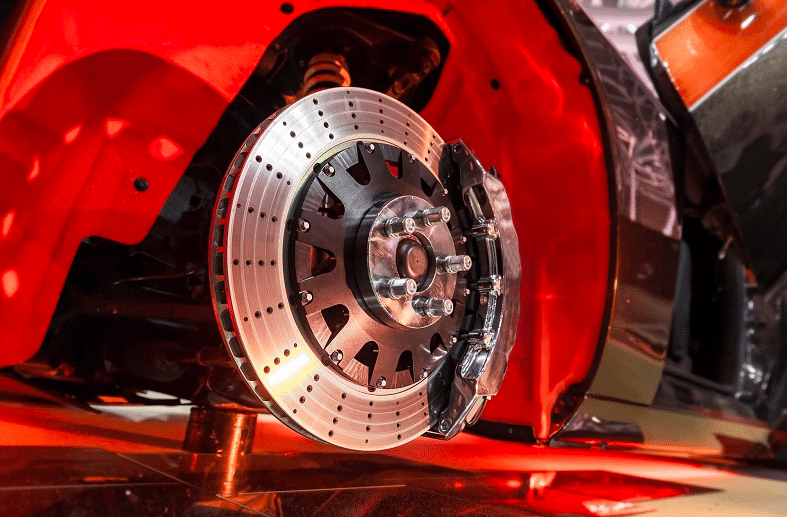Earsplitting screeching, longer time to come to a stop, nose pulls to one side—any or all of these signs point to one thing: your car’s brakes need a check. The consistent grinding just to help with stopping and handling can build up and take its toll on the car’s most important safety feature. Without proper maintenance, brakes will fail when you need them the most.

A thorough check will sometimes warrant simple lubrication on the brake pads, but other times it’ll tell you to get a brand-new brake kit. It boils down to several factors, such as driving habits, driving conditions, and the quality of the brakes. As a rule of thumb, think of replacement when your car has run at least 50,000 miles.
Some car owners will bring their rides into the local shop for brake maintenance, but others want to do it themselves. Either way, you should keep the following tips in mind:
- Always go for the best
Working brakes mean the difference between a peaceful drive and a costly mishap on the road. When the National Highway Traffic Safety Administration studied crash data from 2005 to 2007, they found that brake-related causes accounted for around one in five accidents. Among vehicle-related critical reasons, brakes are the second most prevalent. (1)
Brake kits should always be of the highest caliber, given how important they are. The best ones will help bring any car to a halt, even in the shortest possible distances. Brake kits may come with a hefty price tag, but you can’t put a price on road safety.
Naturally, your replacement brakes should be the best fit for your make and model. Fortunately, most online stores can narrow down the options by inputting the vehicle brand, model, and version. Some even do so with just the Vehicle Identification Number (VIN).
- Bring out the manual
One study presented to the Human Factors and Ergonomics Society discovered that 41% of car owners have never read their car’s manual. While more have taken the time to do so, the study found that only 5% said they read it in its entirety. It’s understandable why: manuals are bulky, and new car owners can’t wait to get on the wheel. (2)
Despite this, a manual is indispensable in everything you do to your car, including performing a brake replacement. Not everyone likes reading walls of text, but these long paragraphs contain all you need to know about brake replacement, namely:
- The proper placement of the car jack
- The suitable brake kits for the model
- Guidelines on upgrading to performance brake kits
- The correct brake fluid to use (after a brake flush)
- Prepare the necessary tools
If you plan on having a shop mechanic perform the replacement, you don’t need to worry about this step. At most, all you’ll need are the car, the replacement brake kit, and yourself. If doing it yourself, your garage should at least have the following tools (apart from the replacement kit):
- Mechanic’s gloves for preventing hand injuries
- Protective wear to reduce exposure to brake dust
- Purpose-built service jack (a must for heavy vehicles)
- Lug nut wrench
- Brake caliper tool (C-clamps also suffice)
- Brake bleeder wrench (if bleeding’s necessary)
- Allen wrench set
- Lubricants and greases
(3)
It pays to have complete tools, as brake replacement is a complicated endeavor. It entails around a dozen steps and must be done one side at a time, as completing one side tends to raise the brake fluid level. You’d want to avoid the fluid from overflowing when doing the other side. (4)
- Break-in new brakes
Whether standard or high-performance brake kits, replacements should undergo a break-in after installation. A break-in prompts the new brake pads to create a layer of the friction material on the rotors. This helps the brakes produce more friction, resulting in better stopping and handling.
Most brake manufacturers and mechanics recommend the 30-30-30 procedure for performing a break-in. It involves making 30 slow stops from 30 mph within 30 seconds of each stop to let the brakes cool off. Another alternative is the 60-20-10 procedure, slowing from 60 mph to 20 mph ten times (maintain 60 mph for a few minutes from the last stop before slowing down). (5)
Conclusion
When you’ve driven your car for a considerable part of its lifetime, it’s probably time to have its brakes checked. There’s no need to wait until the signs of failing brakes start to manifest. If the inspection says they need replacing, invest in high-quality brake kits to keep the car roadworthy.
Sources:
- “Critical Reasons for Crashes Investigated in the National Motor Vehicle Crash Causation Survey,” https://crashstats.nhtsa.dot.gov/Api/Public/ViewPublication/812115
- “On the Reading of Product Owner’s Manuals: Perceptions and Product Complexity,” https://www.safetyhumanfactors.org/wp-content/uploads/2020/07/221)Mehlenbacher,Wogalter,Laughery(2002).pdf
- “THE TOOLS NEEDED TO CHANGE BRAKES,” https://knowhow.napaonline.com/the-tools-needed-to-change-brakes/
- “How To Change Your Brake Pads,” https://www.edmunds.com/how-to/how-to-change-your-brake-pads.html
- “What’s The Best Way To Break In New Brake Pads?” https://www.counterman.com/whats-the-best-way-to-break-in-new-brake-pads/
Facebook Comments